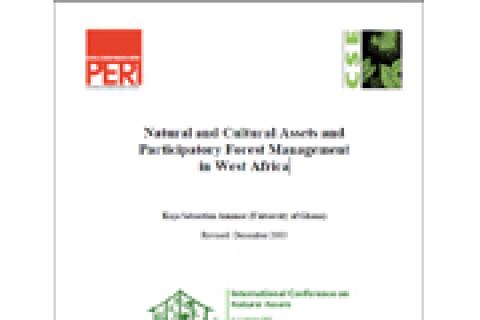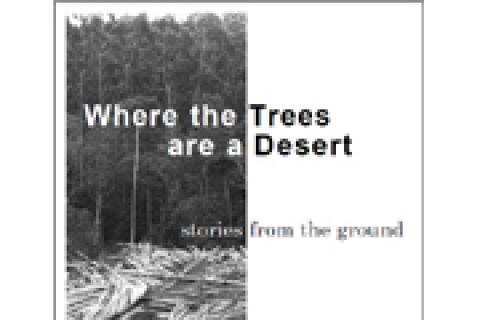The forest issue was also present at one of the conferences of the World Social Forum, under the broader issue of “Development Induced Displacement. Perspectives and Strategies.” (1)
All speakers stressed the relationship between so-called development and displacement -forced and “voluntary”- of local people affected by “development” projects. Logging, dams, plantations, mining, protected areas, tourism, had a common result: the appropriation of local communities’ lands and resources and the displacement of millions of people affected by those projects.
Other information
Industrial tree plantations have a long history of negative social and environmental impacts. It was therefore felt that there was a clear need to raise the issue in a specific workshop at the World Social Forum. Participants shared their experiences from a broad range of countries.
by Kojo Sebastian Amanor (University of Ghana), December 2003
Natural and Cultural Assets and Participatory Forest Management in West Africa
On 28 November-4 December 2003, at Rasi Salai, Thailand, the Thailand-based Assembly of the Poor, USA-based International Rivers Network (IRN), and Southeast Asia Rivers Network (SEARIN) from Thailand, organized the Second International Meeting of Dam Affected People and their Allies, or Rivers for Life!
As the global economy expands, pressure on indigenous lands to yield up minerals, oil and gas is intensifying, posing a major threat on them, their lands, territories and the resources that they depend on. The World Bank has been an instrument of such process, supporting mining projects that have been even condemned by the United Nations.
By Carbon Trade Watch, TNI/FASE
This collaorative brieing gives an insight into the history of monoculture eucalyptus plantations inBrazil and their impacts on local people and the environment. It also explores the new finances made available by the World Bank that allows the expansion of these destructive plantations through the carbon market.
Download full document here
By Chris Lang
Published in Guerrero, D. (ed.) (2003) A Handbook on the Asian Development Bank: The ADB and its operations in Asia and the Pacific Region. Focus Asien no. 16. Asienhaus, Essen. November 2003.
Read the full document here
The climate crisis is a lot like other environmental crises. Coming to terms with the science is the least of the problems. What’s harder is to organize effective and democratic strategies for action. What’s the political landscape in which climate activists must operate? Who can you make alliances with and how? Who are the good guys, who are the bad guys?
To a lot of environmentalists, especially in the North, it all used to seem pretty simple.
By Chris Lang, published in "Pulping the Mekong"
In December 1993, the Asian Development Bank agreed a US$11.2 million loan for an "Industrial Tree Plantations Project" in Laos. Phase 1 of the project, which ran until 2003, aimed to plant 9,600 hectares with fast-growing tree plantations. Phase 2 of the project, "Tree Plantations for Livelihood Improvement" is currently under preparation and will go to the ADB's Board for a decision on funding in October 2003. Under phase 2 the ADB plans to plant a further 10,000 hectares.
The project raises several important concerns:
As we said in our last bulletin “the winds of change blow with increasing strength”. One of such winds was felt at the meeting of the “Network for Women in Natural Resources Management”, held during the last World Forestry Congress (WFC) in Quebec last September. For the first time in this kind of event a group of women with a diversity of interests gathered together to share their views on gender issues.
Just prior to the Vth World Parks Congress, a consortium of mining, oil and gas companies announced that they would accept that all World Heritage Sites were off limits to further exploitation.





